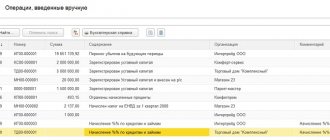Advice is a term of Italian origin. It comes up quite often when discussing financial topics. Its meaning varies depending on the context. This concept is used in commercial, banking and accounting environments.
Despite the fact that the legislation does not clearly stipulate the mandatory details of an advice note, nevertheless, in some cases, courts in their decisions indicate that an advice note is a document of a consolidated form containing information about specific redeemable supplies, as well as the amount and grounds for offset in the event of its implementation , which contains references to specific paid invoices, as well as the size and grounds of offset, if any. See the judges’ opinion
What does a memo mean?
An advice note is an official notice in writing. It is used to notify about the making of any payments or about the dispatch of cargo. Notice is sent from one person to another.
For example, a bank can send its client a notification that an order has been completed. This could be a transfer of money to a specified account. The document also states the amount remaining in the account.
In some cases, courts, when using the term “advice”, identify it with applications for offsetting counter-similar claims, which also indicate the details of the invoices for which the goods were delivered, payment for the goods, indicating the amounts of discounts, penalties, and the like. View the court's opinion
Within the framework of accounting, an advice note is a notification of various deviations or changes in the status of financial flows, property, and various assets. The paper may contain information about changes in regulations regarding the preparation of accounting documents. The following information can also be provided through an advice note:
- Entering debit and credit entries.
- Balance of money in accounts.
- Opening of a letter of credit.
The notice may also contain other information.
Credit memo in accounting
A credit memo in accounting used in transactions between partners has completely different characteristics. When a purchase is completed, an invoice is created by the retail outlet, and a memo is created by its client, certifying the presence of a certain debt to the buyer.
When the client returns the received batch of products or part of it back to the retail outlet, the invoice is canceled or adjustments are made in favor of reducing the payment. A credit memo is also used for this.
If we consider the transfer of counterfeit or low-quality products to the client, here the notification can act as a full-fledged sales document and be developed with the help of a claim or complaint, including refusal to pay. The result is a general decrease in accounts receivable.
Varieties
Advice notes differ from each other depending on from whom and to whom they are sent:
- Between different counterparties. Buying and selling involves sending a notification to the seller. The document indicates this information: the volume of products written off from the warehouse, the established value of the transaction, the receipt of amounts. It is also required to send a notification to the buyer. This information is written down in the paper: debiting money from the counterparty’s personal account. If multiple counterparties are involved in transactions, you can issue a direct memo. It contains a request to send a return memo. The latter is a response notice. It is filled out by the counterparty company. This must be done within the specified time frame. A reciprocal memo confirms the completion of a business transaction and the absence of claims by counterparties against each other.
- Between structural departments of the same company. Such a memo is a form of accounting certificate. The function of this document is to transfer information between departments.
IMPORTANT! A sample advice note for settlements between the head office and a branch from ConsultantPlus is available at the link
An accountant can make document management easier. To do this, you can use 1C: Accounting 8 software. This program has a special “Advice Advice” form. Notifications are also divided into these types:
- Direct. Supposed to be sent without prior notification. The document may indicate various requests and different information.
- Reverse. Such notifications are sent when the company has received an alert. In this case, the advice note is a response to a previously received request. The paper indicates that the company has received notice. Sending a return memo does not necessarily indicate agreement with the original sender's request. Using this document, you can ask to review the terms of the agreement or supplement it. After the companies have exchanged advice notes and agreed on all the conditions, changes are made to the accounting documents.
Advice notes are divided into these types:
- Electronic (certified by electronic signature).
- Postal.
The more technology develops, the more electronic advice notes are used. However, you need to remember that they will not be valid without a digital signature.
FOR YOUR INFORMATION! Advice is often used as part of communication between structural divisions. For example, the document is relevant when distributing expenses among farms with different industries, when funds are received into a current account for the distribution of salaries.
How is an advice note used?
It is generally accepted that an advice note is a bank notification of mutual settlements, but such notifications are also used in business communication between enterprises and for accounting needs. One way or another, the bank servicing the company sends the organization a notice of mutual settlements and transfer of funds to the account from the client legal entity that purchased the products on the basis of a certified agreement.
Payment advice for companies is available in two versions. To begin with, it is an interaction between two different partners. A purchase and sale transaction involves notifying the seller of the volume of goods released, written off from the warehouse, and the transfer of the agreed cost to be paid by the client. The buyer is notified of the transfer of money from his current account to the seller’s account, which becomes payment for the purchased products.
When more than two parties participate in the transfer of funds, the accounting department of one of the parties issues a direct advice note, where a request for a response notice is possible. This is carried out by the accounting department of the second party within the stated time frame and becomes confirmation of the completion of the transaction, as well as the satisfaction of all participants.
The second version of the advice note in accounting involves cooperation between the structures of a single company. In this situation, the notification acts as a derivative version of a certificate from the accounting department. Through documentation, various structures of the organization exchange information about the movement of money.
Credit and debit memo
A credit memo is used in communication between counterparties. It establishes the existence of a debt to the counterparty. To be completed by the buyer. The seller, in turn, draws up an invoice. Essentially, a credit notice indicates an instruction to credit funds.
A debit memo is needed to notify the counterparty that the buyer has obligations to the counterparty. Compiled by the seller. It is evidence of the existence of the right to demand the fulfillment of obligations. The document can also be considered an order to write off funds upon conclusion of a transaction. Debit memo is classified into these types:
- Notification that the settlement transaction has been completed.
- A message that the recipient has a debt.
FOR YOUR INFORMATION! Advice is used quite rarely in Russian companies. Invoices serve as a replacement for this document. However, the accountant needs to keep in mind that advice notes are necessarily used in international transactions.
Credit memo in banking
Speaking about various banking services, here the credit memo has different grounds. An agreement signed between a number of banking institutions is taken into account. This document, whose basis and availability provides the client with the opportunity to cash an existing check at a bank branch or a completely different institution that does not service this account.
Thus, in the banking industry, a credit memo is a document developed on the basis of an agreement between financial institutions, which provides the consumer with the right to cash financial documents in other branches or banks that are not involved in maintaining his current and cash accounts. Such a notification requires compliance with some nuances:
- Issuing a credit memo involves mentioning in a special form the options for checks, as well as the total amount available for acceptance as payment by employees of a banking structure or other branch.
- The advice note must have clear information about what period of time is allocated for accepting checks.
- A credit memo requires a sample signature of the client representing the person, as well as a sample stamp.
We can conclude that the credit memo should contain information about the time limits for accepting checks, maximum funds, along with samples of the company seal and client signature. If the consumer provides all necessary authority for any credit memo transactions to employees of the banking entity, the bank itself must have in its possession sample signatures of the selected employees.
Issuing an advice note
There is no unified form of advice. Therefore, a company can establish its own form of document, which will be convenient for business correspondence. However, the paper must contain this data:
- Notification number.
- Transaction date.
- The essence of the operation.
- The grounds on which it was carried out.
- Amount and account number.
- Transaction amount or sales proceeds.
- Information about the sender and recipient (including details).
- Outgoing number.
The method of transferring advice is regulated by correspondent and interbank agreements. The advice note contains all the details of official documents. If this paper is sent to a bank or government agency, it must be certified with a seal.
The following documents may be attached to the advice note:
- Money orders.
- Memorial warrants.
- Other.
All this is accompanying documentation that is needed to confirm the information contained in the advice note. Also, the document in question itself may serve as confirmation. For example, it may be attached to payment orders. Debit and credit memos can be created based on the document.
IMPORTANT! The advice form established by the company must be secured using internal regulations.
The generation of advice notes through accounting programs depends on the name of this program, as well as on the release of the configuration.
ATTENTION! Advice is a replaceable document. Its analogues are payment orders and settlement papers.
Registration procedure
A debit memo is an order to write off a certain amount of money. In economic practice, it is issued much less frequently than a loan. As a rule, the document replaces invoices. It is in demand in situations where the generation of an invoice is undesirable (for example, the delivery occurred between branches of the same company, the transaction is not related to purchase and sale).
In practice, information about several transactions is accumulated in one document. The main thing is that the notification reaches the recipient on time. Issuing a debit memo requires receiving a return notification from the addressee. In this regard, the notice is printed simultaneously in two or three copies. If two copies are made, they are distributed as follows:
- One is kept in the sender's accounting department. It confirms that the entries in the accounting program were made correctly.
- The second is transferred to the recipient, who, based on it, performs the necessary actions.
If the advice note is printed in three copies, the third copy is sent to the company's head office. Based on it, the accountant makes entries to the debit or credit of the 79th account.
Drawing up an advice note is not mandatory when it comes to moving inventory items. In this situation, primary documents (for example, invoices) are sufficient. The relevance of notifications increases if financial obligations or expenses are transferred.
Credit memo
This type of document is used frequently. Therefore, we can dwell on it in more detail.
This form contains the following information:
- What checks were accepted;
- What is the total amount;
- When payment is accepted;
- Client's signature.
A credit memo states exactly how much debt a company has to a customer. But when the goods are delivered to the client, an invoice is issued. If the customer returns all or part of the goods to the supplier, the invoice can be canceled with a credit note.
Thus, the advice note has nothing to do with the visa, as it might seem at first glance. This is a document that is used in financial calculations. Roughly speaking, this is a kind of check confirming actions.
Advice on OS
An outgoing OS memo is needed to record the transfer of funds to the department. The latter is selected in the “Recipient” column from the company directory. The operation is recorded on the subaccount of account 79. The OS is entered using the “Add” key. After filling out the document, postings for depreciation and initial cost are created. It is also necessary to create entries in the funds accounting registers.
An incoming OS notification is needed to record the receipt of funds from the department. The department from which the OS was sent is selected in the “Sender” column. For the calculation, the subaccount of account 79 is used.









